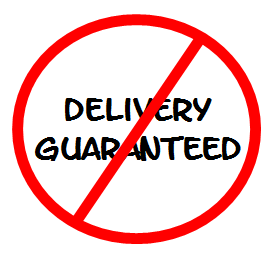 A big concern of all email marketers is how to stop emails going to spam.
A big concern of all email marketers is how to stop emails going to spam.
The biggest single cause of ending up in the junk folder is consumer spam complaints. When too many of your subscribers classify your email as spam, the ISPs reduce your reputation and your inbox placement suffers.
ReturnPath report that the best senders who achieve 98% inbox placement have complaint rates of 0.03%, whereas those with complaints rates ten times higher, at 0.33% complaints, can see up to 20% of emails go to junk.
The message is clear; avoid the junk folder by ensuring low complaints. But how can you avoid complaints?
Step forward the new email tracking study from the DMA. This sheds light on consumer behaviour and attitudes to email marketing, in some cases behaviours which impact deliverability.
One of the questions asked was why consumers mark an email as spam. The chart below shows the answer.

The top four causes of being marked as spam are:
- Don’t recognise the sender
- Too many emails
- Don’t remember signing up
- Content/brand no longer relevant
Armed with this knowledge here are the actions needed to reduce the issue.
Don’t recognise the sender
Be consistent with your from name and use a name that the subscriber can connect with. Typically this means the brand name the subscriber saw when signing up.
Ensure the branding and design of your email show it clearly related to the branding seen by the subscriber at time of signup.
Not recognising the sender is one reason why using 3rd party data hurts inbox placement, the person receiving the email doesn’t understand why the sender is sending them email, since the sender and brand are different to the brand that collected their email address.
I’ve also seen it be a significant issue with resulting high complaint rates for companies with many sub-brands, where the sub-brands all have their own unique identity. In these cases when introducing a new sub-brand to a subscriber the original brand of sign-up needs to be identified to reduce complaints.
Too many emails
Who wouldn’t say they get too many emails? However, high frequency of content need not be an issue. Many people are fine with receiving daily deal emails and some deal companies even send more than one a day sometimes.
There are two important factors related to the question of ‘too many’; expectation and value.
- What expectation for volume of emails was set at sign-up? Did they know it was going to be daily?
- Are the emails delivering enough value? Everyone is happy to have frequent content of value to them. You could send as many emails as you liked if you could attach a crisp new bank note to every email. You’d have subscribers asking for more.
So think value not volume, provide lots of interesting content with value and you won’t have a problem with sending too many emails.
Don’t remember signing up
The solution here is easy, ensure your brand doesn’t get forgotten.
- Send an immediate welcome message to all new subscribers, so they connect your brand in their inbox with the action they have just taken. The welcome email from name and branding should be strongly related to your website branding and the branding of emails that follow on after welcome.
- Don’t leave big gaps between emails. Sending at a low frequency means someone who was a casual signup may have forgotten you if they don’t hear from you for a while.
- Don’t ignore a segment of your subscribers with no emails and then after many months start sending to them again. If you must reduce frequency to some of your subscribers, keep at least a monthly email.
Content/brand no longer relevant
If you can’t improve the relevance of your content or if your brand is truly no longer relevant then just accept it’s the end. Whilst it’s sad to say goodbye, it remains a fact of life that all brand relationships come to an end eventually.
So let go of your subscribers cleanly and easily. The aim here is to get them to unsubscribe rather than hit junk.
This means making the unsubscribe link easy to find and the process simple. If you frustrate your subscribers whilst they are trying to unsubscribe they’ll bail and just hit complaint instead.
The de-facto position for unsubscribe links is at the bottom of the email. People know to look here, so always include a bottom link and make sure it’s not in extra small font or using a font colour with poor contrast.
Consider too adding an unsubscribe link at the top of your email, just after your pre-header text. A disengaged subscriber many not wish to even spend time scrolling to the bottom to fish around for your unsubscribe link.
Make use of the List-Unsubscribe header. This means Gmail and Outlook.com (Hotmail) will include an unsubscribe link back to your unsubscribe process. You can find more about the unsubscribe link Gmail includes in our article about Gmail unsubscribing.
If you do land in junk your open and click rates will suffer. Though in a related finding from the DMA tracking study it is interesting to note that 36% of consumers check their junk folder at least once a week for wrongly classified emails.
The DMA email tracking study is one of the very few primary research pieces into consumer attitudes to email marketing. Its full of consumer insight and answers to questions such as how many email addresses do people use. It’s free to download.
Whist complaint rates are key to inbox delivery, they’re not the only factor you need to pay attention to, find out more in our post on 7 tips to avoid bursting your deliverability balloon.
